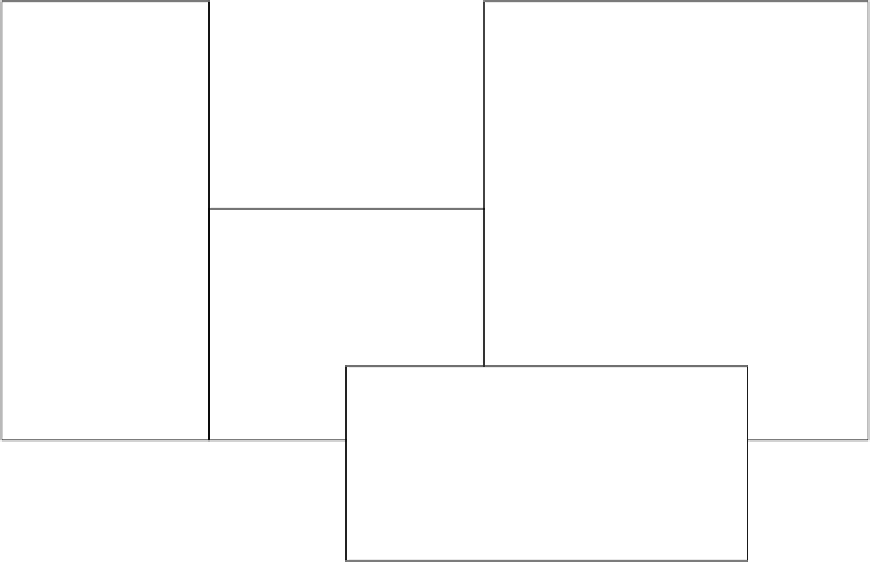Geology Reference
In-Depth Information
Box 7.2 Ionic radii of geologically important elements
s block
p block
Li
+
Be
2+
Ionic radii in
picometres
(1 pm=10
-12
m)
O
2−
F
−
82
132
125
35
Na
+
Mg
2+
Al
3+
Si
4+
110
124*
0.80
S
2−
Cl
−
172
(172)**
47
61
d block
34
Ti
4+
Mn
2+
Fe
3+
K
+
159*
73
Ca
2+
120
*
75
69
86
Fe
2+
Zr
4+
Rb
+
168
*
Sr
2+
133
*
80
Eu
2+
125*
Ce
3+
114*
Eu
3+
107*
Lu
3+
105*
Th
4+
112*
U
4+
108*
f block
†
Refers to tetrahedral co-ordination
Refers to 8 fold co-ordination
The ionic radius of S
2−
should be used with caution as most metal-sulfide bonds are significantly covalent.
*
**
Figure 7.2.1
Ionic radii (in picometres = 10
-12
m) of geologically important elements.
Variation with co-ordination number
the equilibrium length of an ionic bond depends on the
co-ordination of the ions (due to repulsion between
similarly charged ions - Box 7.1). the al-O distance in
analcime Na(alSi
2
O
6
).h
2
O (in which al is tetrahedrally
co-ordinated) is 180 pm, whereas in jadeite (NaalSi
2
O
6
, al
octahedrally co-ordinated) it is more than 190 pm. It
follows that individual ionic radii depend on co-ordination
too. this dependence is more significant for cations than
anions. the data in the chart above refer to octahedral
(6-fold) co-ordination unless otherwise specified.
many crystal structures can be visualized as close-
packed arrays of large anions, with smaller cations
occupying the
interstitial
holes between them.
can be stacked on top, each sphere nestling in the
depression between three spheres in the layer below
(Figure 7.2). The spaces between the touching spheres
have two kinds of three-dimensional geometry. One
type is bounded by the surfaces of four neighbouring
spheres. Joining up their centres generates a regular
tetrahedron
(Figure 7.2a,b, Table 7.1), and in view of
their capacity to accommodate small cations (anal-
ogous to the ball-bearing shown in Figure 7.2b), such
voids are called
tetrahedral sites
.
The radius ratio and its applications
When spheres of the same size are packed together, the
most compact arrangement consists of a stack of reg-
ular planar layers. Every layer has hexagonal symmetry
reminiscent of a honeycomb, each sphere being in con-
tact with six others in the same plane. Similar layers





































































Search WWH ::

Custom Search